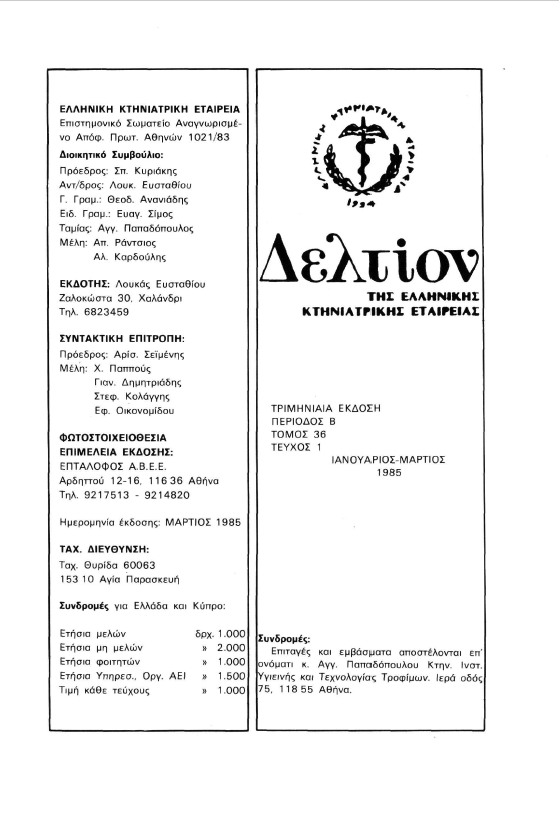Bacteriological quality of the ice cream consumed in Serres and Kilkis
Abstract
The microbiological quality of the icecream consumed in the district of Serres and Kilkis, was investigated during the summer of 1983 and 1984. For this purpose were examinated 107 samples of ice-cream of different kinds, that derived from various small of big factories manufacturing such products. The microbiological condition of the above samples was investigated by determining the total microflora counts, the coliforms, the E.coli, the staphylococci, the salmonellas and the yastsmolds. The examination of the samples pointed out that percentages 66,62% and 91,59% of these presented values of TPC and coliforms respectively distinctly lower than the allowed limits of the product. Even E.coli was present only in 6,54% of the samples. Salmonellae and staphilococci coagulase positive were isolated in none of the examined samples. The percentage of samples with high total plate-count and high number of coliforms compared with corresponding similar works taken up in Greece or other countries were in a same ratio. Therefore, the results show that the hygenic conditions throughout the production line of the ice-cream are not yet satisfactory.
Article Details
- How to Cite
-
ΠΑΝΑΠΩΤΙΔΟΥ-ΜΑΜΑΛΟΥΚΑ Β., & ΚΡΙΤΣΕΠΗ-ΚΩΝΣΤΑΝΤΙΝΟΥ Μ. (2019). Bacteriological quality of the ice cream consumed in Serres and Kilkis. Journal of the Hellenic Veterinary Medical Society, 36(1), 10–17. https://doi.org/10.12681/jhvms.21671
- Issue
- Vol. 36 No. 1 (1985)
- Section
- Articles

This work is licensed under a Creative Commons Attribution-NonCommercial 4.0 International License.
Authors who publish with this journal agree to the following terms:
· Authors retain copyright and grant the journal right of first publication with the work simultaneously licensed under a Creative Commons Attribution Non-Commercial License that allows others to share the work with an acknowledgement of the work's authorship and initial publication in this journal.
· Authors are able to enter into separate, additional contractual arrangements for the non-exclusive distribution of the journal's published version of the work (e.g. post it to an institutional repository or publish it in a book), with an acknowledgement of its initial publication in this journal.
· Authors are permitted and encouraged to post their work online (preferably in institutional repositories or on their website) prior to and during the submission process, as it can lead to productive exchanges, as well as earlier and greater citation of published work.



